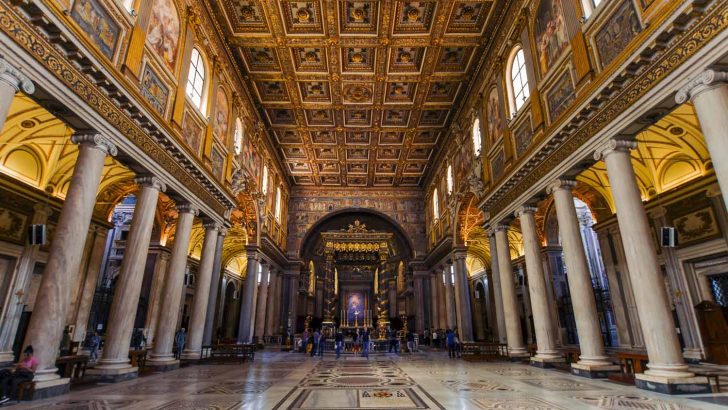Fr Bernard Healy
One of the beauties of our Faith is that it makes itself at home in every nation and culture. Whilst we all celebrate the same Christmas, we do so differently depending on the traditions and circumstances of our own place.
One of my favourite Roman traditions is that of the Zampognari or bagpipers who come down from the mountains each year. They remind me a little of our own wrenboys, but instead of waiting for St Stephen’s Day, the pipers make their appearance before Christmas. From about December 8 onwards, you see them in their rustic shepherd’s garb – breeches, sheepskin jacket, and brimmed hat – travelling in pairs, one playing the traditional Italian pipes, the other on the ciaramella, a kind of oboe.
As they walk the streets and play in piazzas, they stop at street shrines and nativity scenes in order to serenade the Child Jesus, and enter churches playing traditional Italian hymns. They also recite poetry in the traditional dialects of the hills.
As the Romans can’t always understand these poems, they suspect that the culchie Zampognari take the opportunity to slip in insulting verses about the townies rather than sticking to purely religious themes! That being said, they are welcome visitors and a living reminder of the shepherds of Bethlehem.
Big job
In Ireland, Santa Claus is a big part of Christmas. He has a big job so it’s a good thing that he shares his gift-giving duties with others in different parts of the world!
Many people know that in Spain children receive their Christmas presents on the morning of January 6 from the Three Kings. However, here in Rome, the work is delegated to La Befana. She looks a lot like a hag on a broomstick but La Befana is not a witch. Her story is as follows: La Befana was a diligent housewife at the time of our Lord’s birth. As the three Magi made their way to Bethlehem they stopped at her house asking for rest and refreshment.
So warmly did she welcome them, and so well did she feed them, that the Kings asked her to join them on the journey to Bethlehem. Alas, La Befana had too much housework to do. She still had to sweep the floor so she felt she couldn’t join them.
As she swept she repented of her decision, gathered some sweets and gifts together, and took off in search of the Magi so that she too could welcome the Child-Messiah. However, she was unable to catch up with them so with broomstick in hand, she visits every house where children live, and leaves them gifts in the hope that one of them is the Baby Jesus.
These are still kept under the high altar to this day.
When in Rome…
I love to visit different cribs at this time of year and Rome is the place to do that! A city with hundreds of churches has hundreds of cribs to visit. Most churches are rightly proud of their nativity scene.
There is also the annual ‘100 Cribs’ exhibition, held this year near St Peter’s where both traditional and modern cribs from all over the world are displayed, to say nothing of the unusual crib made of sand in St Peter’s Square.
However, the church I most like to visit at this time of year is the Basilica of Santa Maria Maggiore, the oldest and largest church in the city dedicated to the Mother of God.
In 432 – the traditional year of St Patrick’s arrival in Ireland – Pope Sixtus III had a chapel or grotto added to the church designed to resemble the cave of Our Lord’s birth in Bethlehem. This meant that those who could not travel to the Holy Land could still make a pilgrimage to the place of Our Lord’s birth. St Francis is rightly credited with inventing the Christmas nativity scene, but Pope Sixtus’ grotto anticipated the spirit of the devotion by almost 800 years.
Later the Basilica would become home to several pieces of wood brought from the Holy Land and said to be part of the original manger.


 Basilica di Santa Maria Maggiore
Basilica di Santa Maria Maggiore 